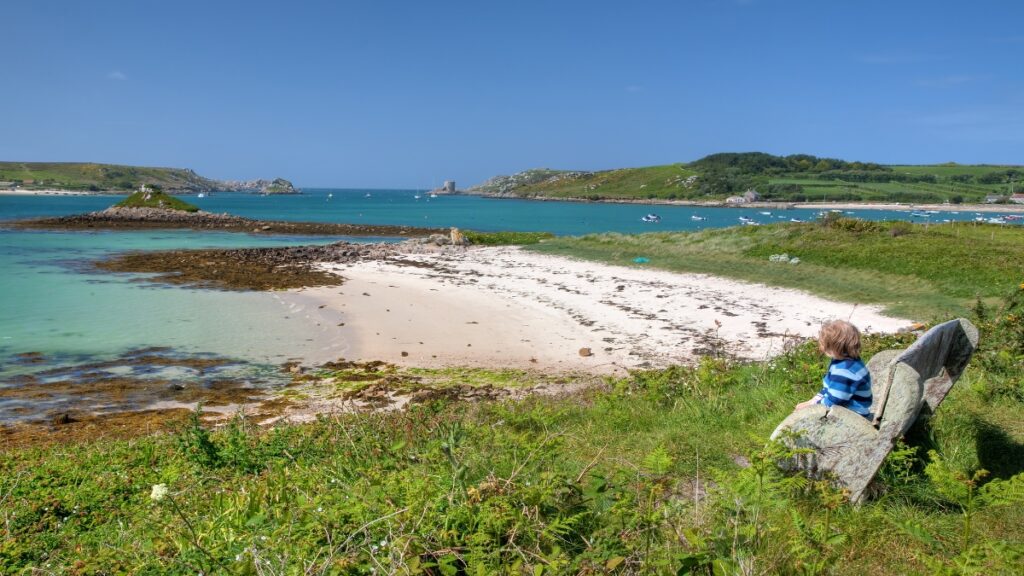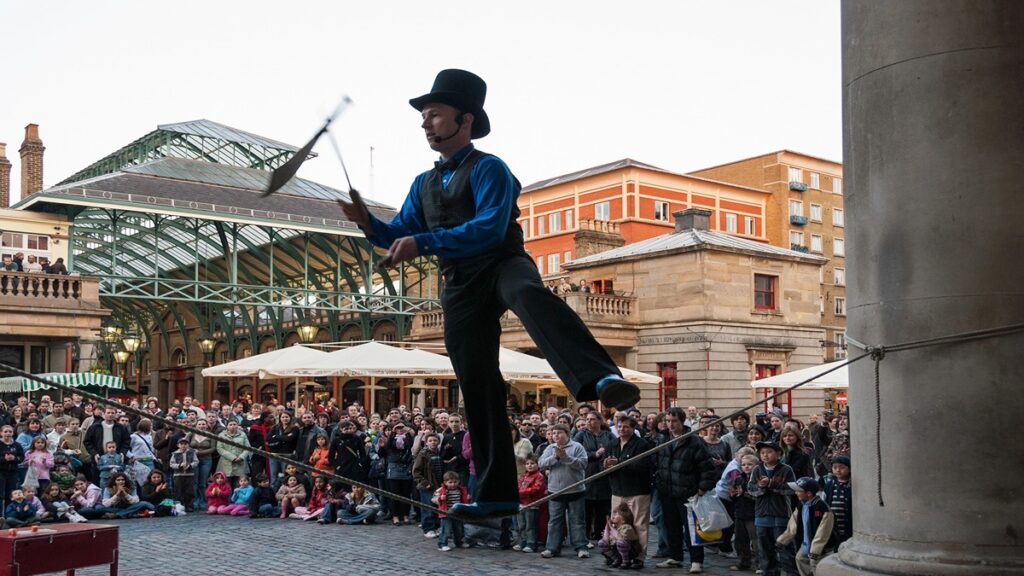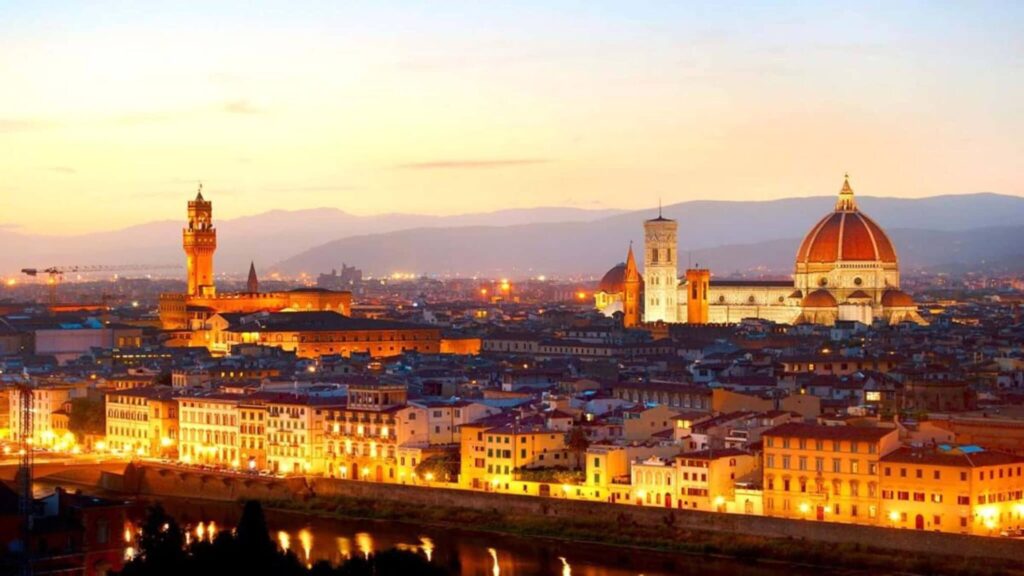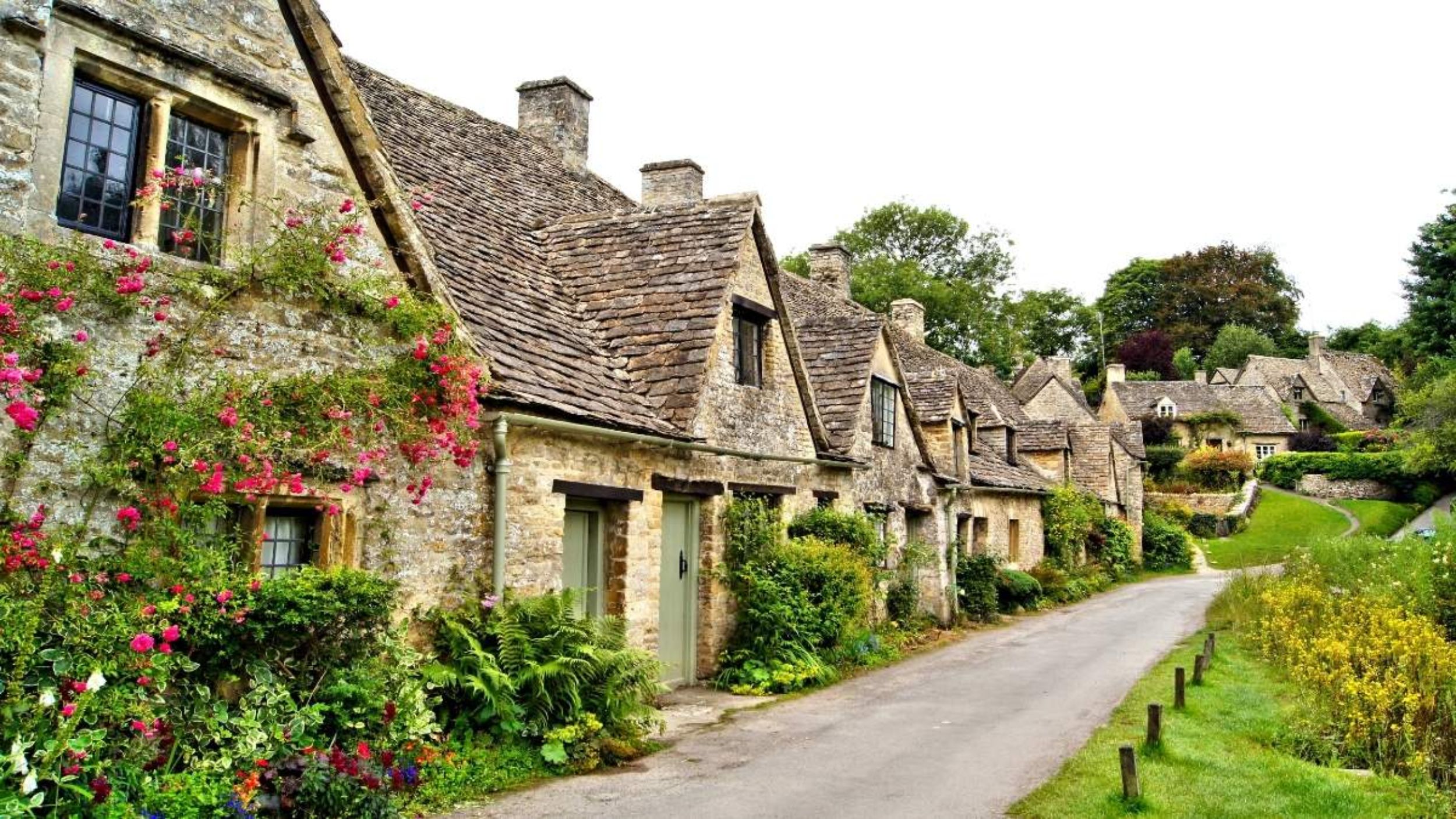
Complete Guide to the Nicest Villages in Cotswolds: Hidden Gems and Historic Beauty
Nestled within rolling hills and verdant valleys, the Cotswolds region showcases England’s most enchanting rural landscapes. While exploring the nicest villages in Cotswolds, visitors discover a perfectly preserved world of honey-coloured limestone architecture, mediaeval churches, and ancient market squares that tell tales of the prosperous wool trade era.
Timeless beauty graces every corner of these historic settlements, from bubbling streams crossed by ancient bridges to hidden gardens and cobbled lanes. Each village maintains its own distinct character through carefully preserved architecture, local traditions, and seasonal celebrations that bring communities together throughout the year. Even so, their shared heritage creates a harmonious tapestry of English rural life at its finest.
Cotswolds Tours From London We Think You May Enjoy.
Nicest Villages in Cotswolds: Historic Burford Highlights
The honey-coloured stone buildings line the steep High Street, creating a stunning backdrop. Visitors seeking the nicest villages in Cotswolds often discover Burford’s medieval charm through its ancient doorways and time-worn steps. The magnificent parish church stands as a testament to the wealth of wool merchants who shaped this historic market town.
Exploring Burford’s Medieval Heritage
Walking through history, each step along Burford’s sloping main street reveals centuries of stories etched in stone. Though especially beautiful during morning light, the ancient merchants’ houses cast enchanting shadows across narrow lanes throughout the day. Antique shops and traditional tearooms, particularly along the lower end of High Street, preserve the authentic character that draws visitors.
Top tip: Visit early morning to photograph the golden sunlight illuminating the historic limestone buildings.
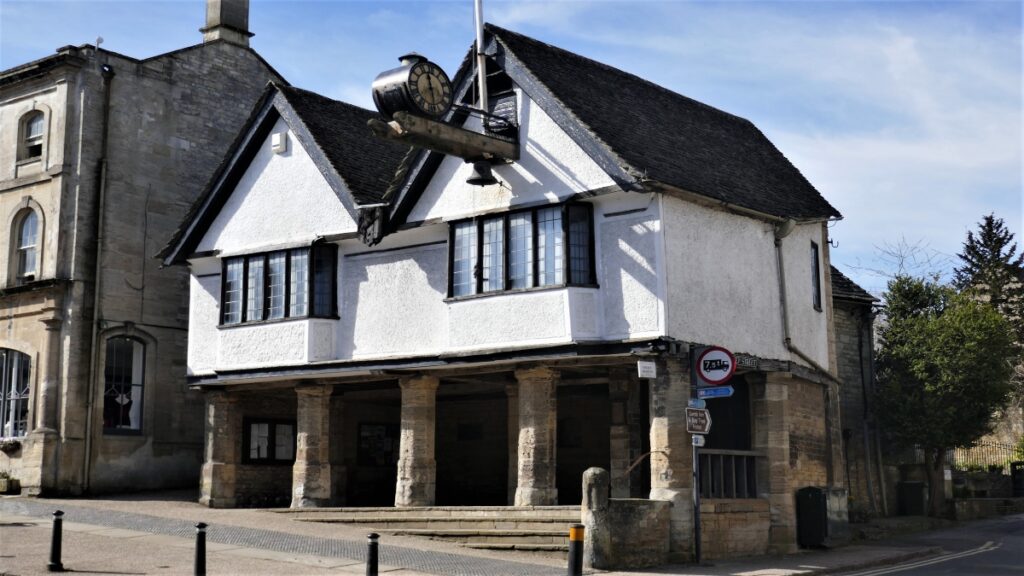
Ancient trade routes converge at this gateway to the Cotswolds, where merchants once gathered to trade wool and other goods. At first glance, the impressive Church of St John the Baptist dominates the skyline. Even so, hidden courtyards and secret gardens wait to be discovered down quiet alleyways, each telling its own story of medieval life.
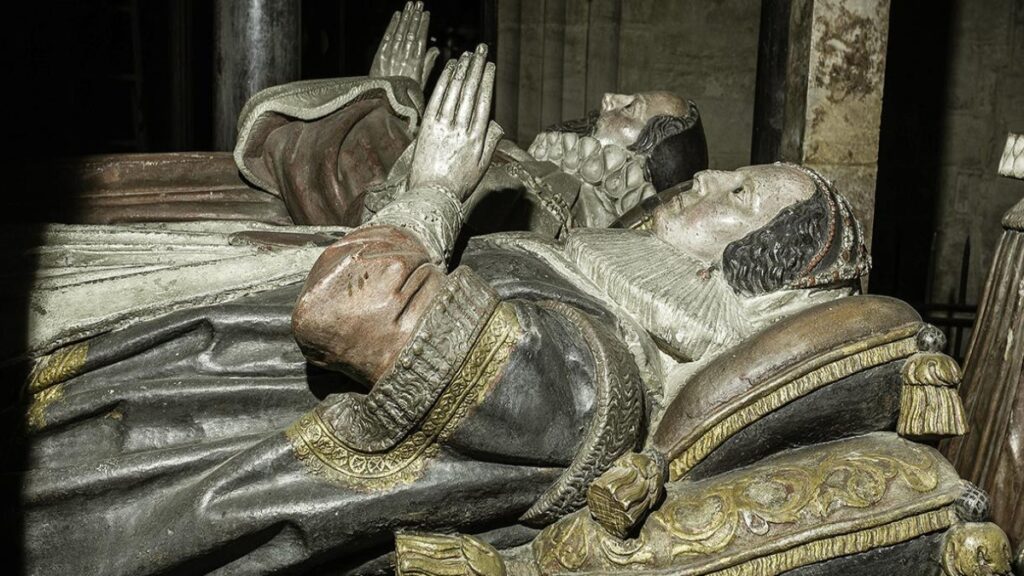
Historic Market Town Highlights
Beyond the famous church spire lies a treasure trove of architectural delights spanning several centuries. While the nicest villages in Cotswolds each offer unique charm, Burford’s historic Tolsey building provides fascinating insights into medieval commerce. The original timber-framed structure served as both courthouse and meeting place for wool merchants.
Local attraction: The Tolsey Museum showcases Burford’s rich trading history through fascinating artefacts and exhibits.
Tucked away behind the main street, peaceful lanes reveal hidden gems like the almshouses and ancient priory ruins. In addition to these historic treasures, local artisans continue age-old traditions in workshops scattered throughout the town. Due to its preserved medieval character, film crews often choose Burford as their preferred location.
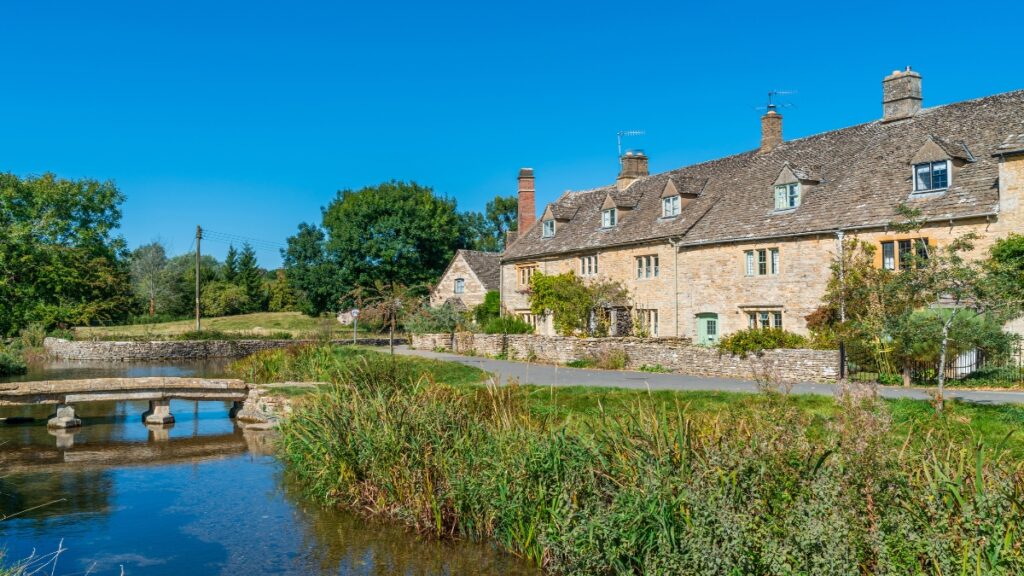
Exploring the Nicest Villages in Cotswolds: Lower Slaughter
Meandering alongside the crystal-clear River Eye, Lower Slaughter presents a picturesque scene of tranquil beauty. While exploring the nicest villages in Cotswolds, visitors discover this hidden gem’s unspoilt charm through ancient footbridges and peaceful waterways. The gentle flow of water provides a soothing backdrop to this timeless setting.
Traditional Cotswolds Village Life
Standing proud since the 19th century, the restored Old Mill serves as a testament to local heritage. Though water no longer powers the mill wheel, its distinctive red brick chimney rises above honey-coloured stone cottages. As a result of careful preservation, the mill museum now shares stories of village life through centuries.
Local attraction: The Old Mill Museum offers fascinating insights into traditional milling practices and village history.
Pristine gardens border the gentle stream, creating picture-perfect vistas at every turn. While particularly enchanting during spring when wildflowers bloom, the village maintains its charm throughout the seasons. Even so, each corner reveals new perspectives of this wonderfully preserved mediaeval settlement.
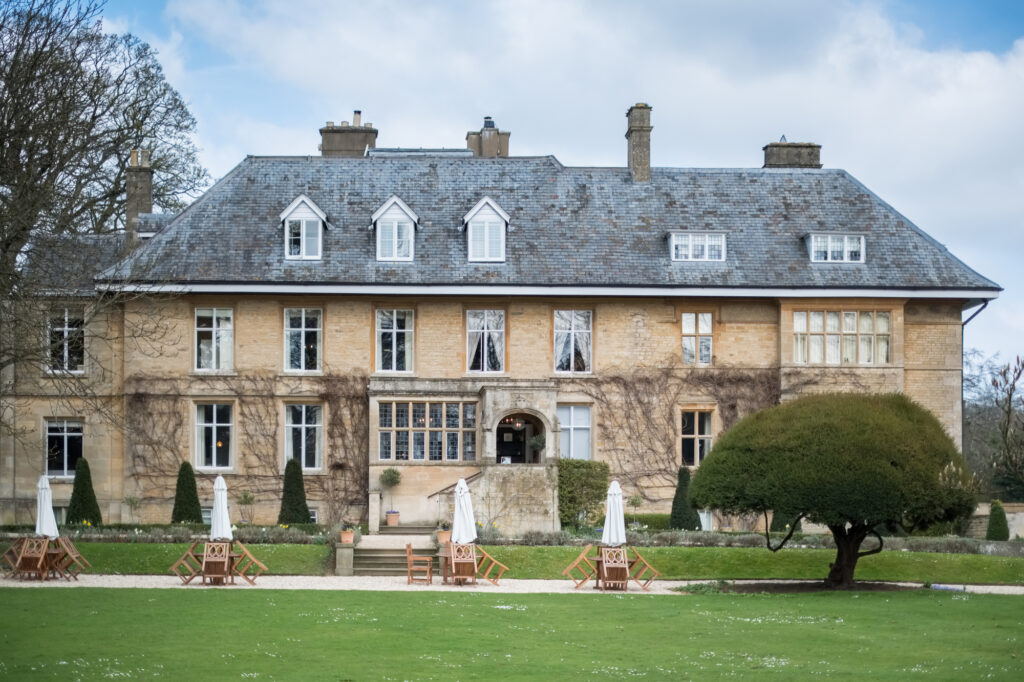
Riverside Walks and Historic Trails
Following ancient pathways between Lower and Upper Slaughter reveals countless photographic opportunities. In fact, these sister villages remain among the nicest villages in Cotswolds for their authentic character. Due to their secluded location, both settlements have retained their peaceful atmosphere through centuries.
Top tip: Take the mile-long pathway between Lower and Upper Slaughter for spectacular countryside views.
Traditional craftsmanship shines through in every limestone wall and slate roof of this protected community. At first glance, the village appears frozen in time, yet closer inspection reveals subtle modern touches. Such as the carefully maintained gardens that line the riverside walk, each adding their own character.
Cotswolds Tours From London We Think You May Enjoy.
Medieval Charm: Stow-on-the-Wold Village Experience
Perched atop an 800-foot hill, Stow-on-the-Wold commands impressive views across rolling Cotswolds countryside. Though centuries have passed, this historic market square remains the heart of local life. While exploring the nicest villages in Cotswolds, visitors discover ancient trading traditions still alive today.
Market Square Heritage Tours
Cobbled passages lead away from England’s highest market town square, revealing hidden courtyards and historical treasures. At first glance, the market cross stands as a reminder of prosperous wool trading days. Even so, the square continues to bustle with activity, particularly during the town’s seasonal farmers’ markets.
Local attraction: St Edward’s Church features the famous north door flanked by ancient yew trees.
Original timber-framed buildings surround the marketplace, their weathered facades telling tales of centuries past. Though especially busy during market days, quiet corners offer peaceful spots for contemplation. Due to its elevated position, the town square provides spectacular views across five counties.
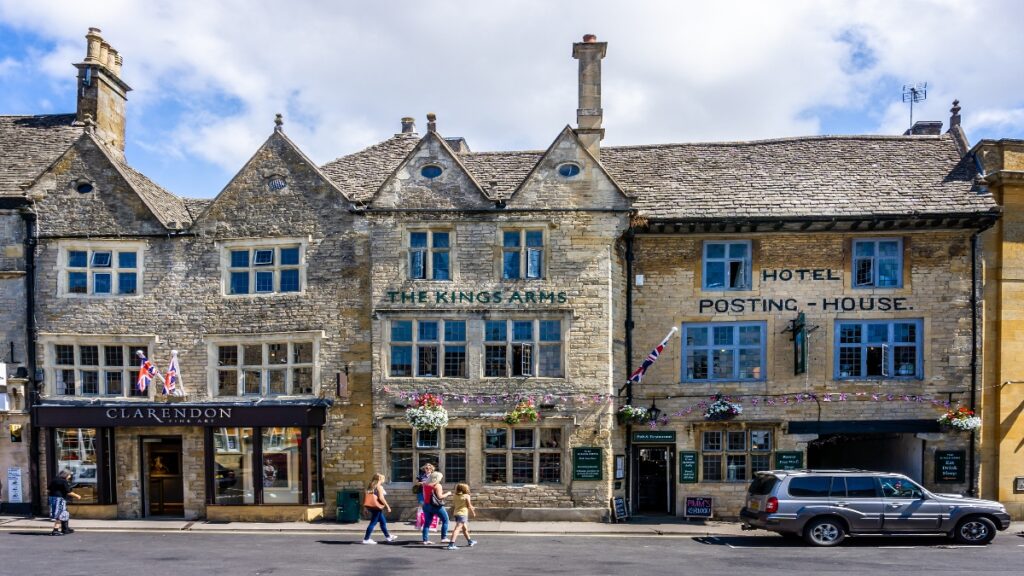
Historic Trading Routes and Tales
Walking through narrow alleys known locally as ‘tures’, visitors step back into mediaeval times. While the nicest villages in Cotswolds each hold unique charm, Stow’s rich trading heritage sets it apart. Such as the Fleece Alley, where sheep once travelled from field to market.
Interesting fact: The town’s hilltop location made it a natural gathering point for prehistoric trackways.
Ancient wool trade routes converge at this historic marketplace, once hosting England’s largest sheep fairs. In addition to its trading heritage, the town offers antique shops housed in centuries-old buildings. As a result, modern visitors discover both history and treasures while exploring these historic streets.

Nicest Villages in Cotswolds: Bourton-on-the-Water Guide
Gracefully straddling the River Windrush, Bourton-on-the-Water captures hearts with its elegant low bridges and clear waters. While exploring the nicest villages in Cotswolds, visitors discover why this charming location earned its ‘Venice of the Cotswolds’ nickname. Though especially beautiful in morning light, the village maintains its allure throughout the day.
Riverside Charm and Architecture
Traditional limestone buildings reflect perfectly in the gentle river flowing through the village centre. At first glance, the five iconic bridges appear unchanged since the 18th century. Even so, each crossing tells its own story of village life through the centuries, connecting communities across the water.
Top tip: Visit early morning or late evening to capture stunning reflections in the River Windrush.
Flowing gently through the heart of the village, the River Windrush creates a peaceful atmosphere year-round. In fact, the riverside paths offer delightful walks past traditional tea rooms and artisan shops. Due to its unique layout, visitors find new perspectives around every corner of this enchanting village.
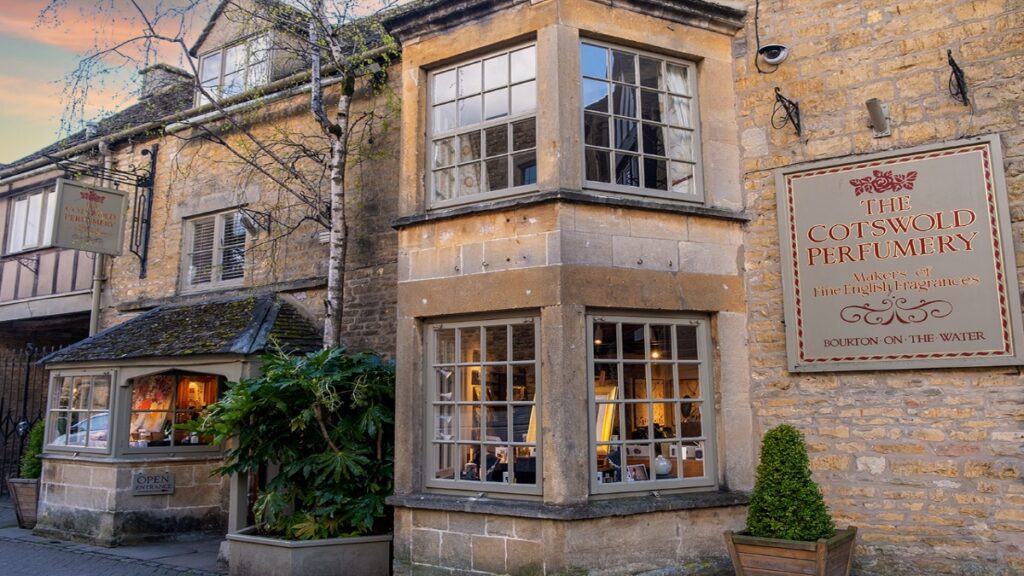
Village Attractions and Heritage
Beyond the peaceful riverside walks, Bourton offers unique attractions celebrating local heritage and craftsmanship. While the nicest villages in Cotswolds each have distinct character, Bourton’s blend of nature and architecture stands apart. Such as the Model Village, perfectly replicating Bourton itself in miniature form.
Local attraction: The Model Village offers a fascinating one-ninth scale replica of Bourton-on-the-Water.
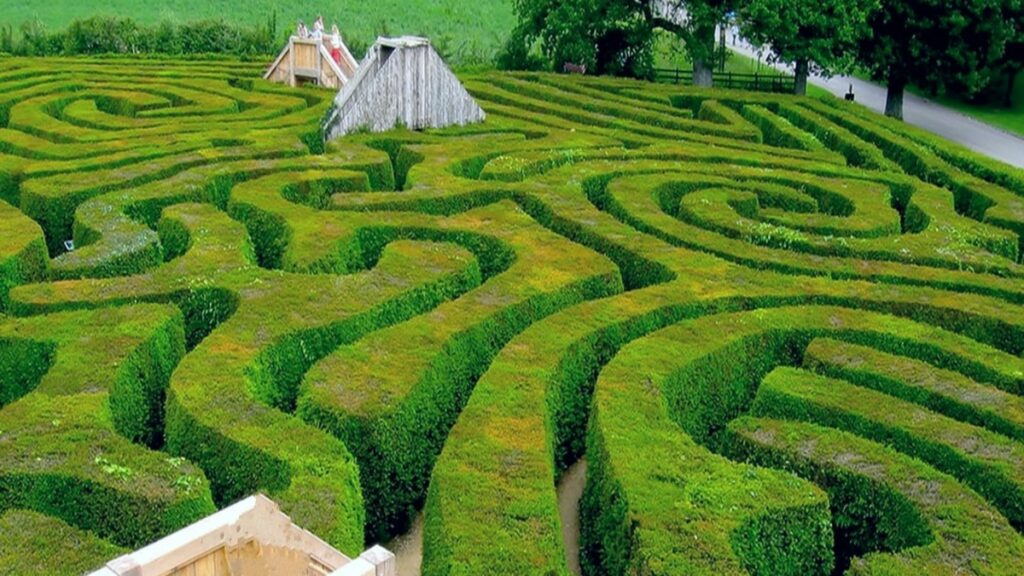
Traditional Cotswold stone craftsmanship shines throughout the village, from grand houses to modest cottages. Though particularly bustling during summer months, quiet corners and hidden gardens provide peaceful retreats. As a result, visitors discover both lively atmosphere and tranquil spaces within this remarkable village.
Cotswolds Tours From London We Think You May Enjoy.
Cotswolds Village Highlights: Discovering Bibury
Nestled along the River Coln, Bibury presents a picture-perfect scene of traditional Cotswolds charm. While discovering the nicest villages in Cotswolds, visitors find themselves enchanted by Arlington Row’s ancient weavers’ cottages. Though centuries old, these honey-coloured stone buildings maintain their timeless appeal throughout seasons.
Historic Arlington Row Experience
Standing since the 14th century, Arlington Row’s wool workers’ cottages reflect in Rack Isle’s peaceful waters. At first glance, these Grade I listed buildings appear unchanged since their conversion from monastic wool store. Even so, each cottage tells its own story of village life through generations.
Interesting fact: Arlington Row features on the inside cover of UK passports.
Centuries of history unfold along the gentle slope of this iconic street. In fact, the nicest villages in Cotswolds often feature historic industrial heritage. Due to careful preservation, these former weavers’ cottages remain among Britain’s most photographed scenes.
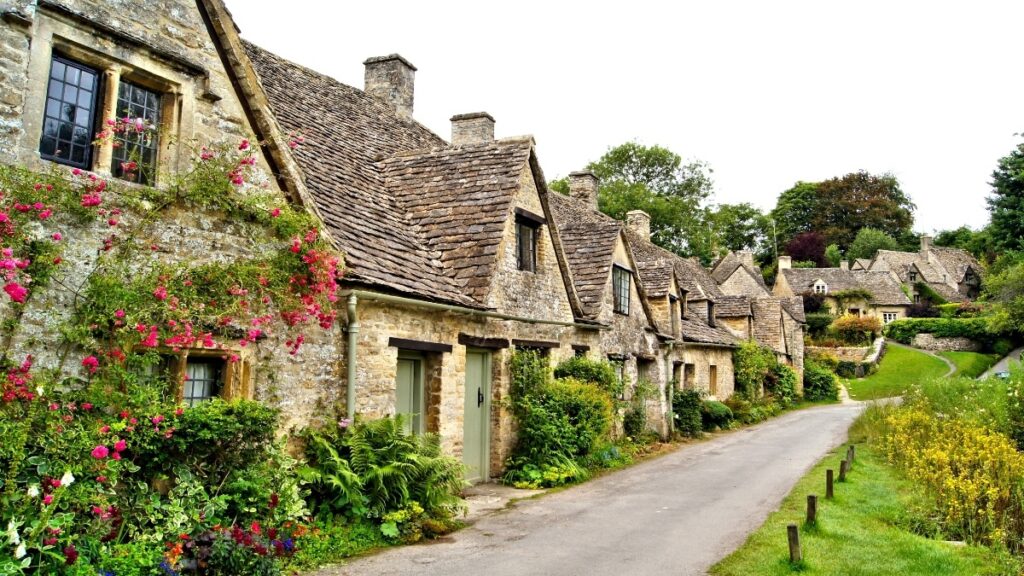
Riverside Gardens and Wildlife
Meandering pathways lead visitors through Rack Isle, a water meadow teeming with local wildlife. Though particularly beautiful during spring and summer, the area maintains its charm year-round. Such as the water gardens, where clear springs attract diverse bird species.
Local attraction: The Bibury Trout Farm offers visitors chances to catch their own fresh dinner.

Traditional stone bridges cross the crystal-clear River Coln, connecting different parts of this historic village. While exploring the peaceful riverside walks, visitors discover hidden corners and secret gardens. As a result of careful conservation, Bibury preserves its natural beauty alongside architectural heritage.
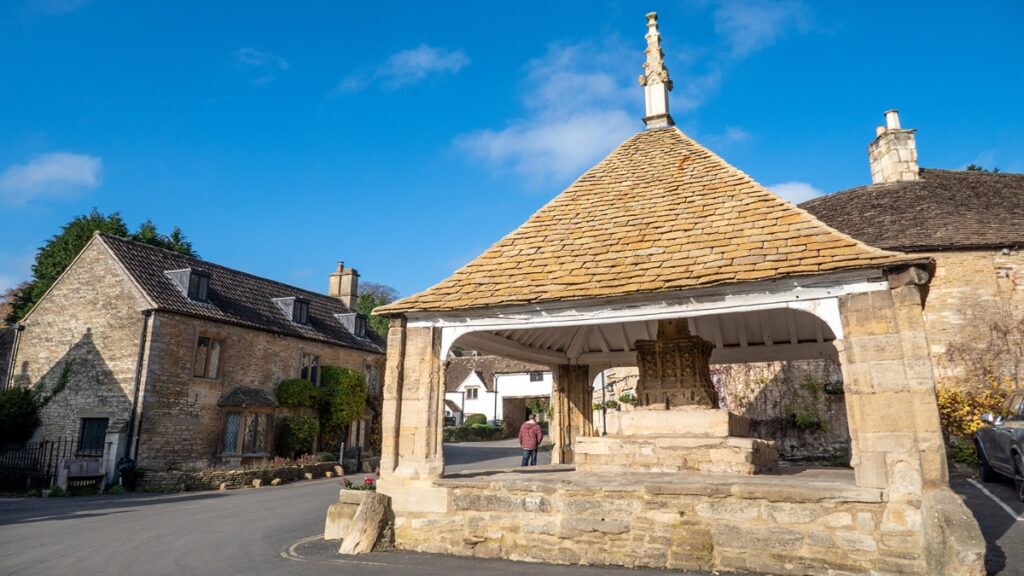
Exploring Castle Combe: Nicest Villages in Cotswolds
Tucked away in a wooded valley, Castle Combe presents an untouched vision of mediaeval Cotswolds life. While exploring the nicest villages in Cotswolds, visitors discover this hidden gem’s perfectly preserved streets. Though especially atmospheric in morning mist, the village maintains its charm throughout changing seasons.
Mediaeval Market Cross Heritage
Standing proud since the 14th century, the ancient market cross marks the heart of village life. At first glance, the surrounding cottages appear unchanged since their construction by wealthy wool merchants. Even so, each building holds unique stories of village life through centuries.
Local attraction: St Andrew’s Church houses one of the oldest working clocks in England.
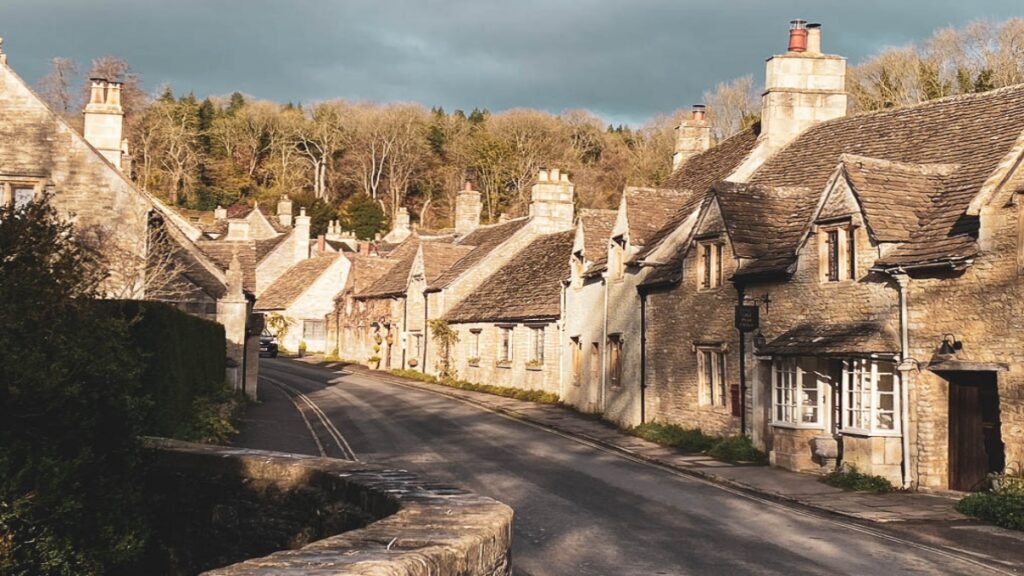
Traditional craftsmanship shines through every limestone wall and mullioned window in this protected village. In fact, the nicest villages in Cotswolds rarely match Castle Combe’s authentic mediaeval character. Due to strict preservation orders, modern alterations remain virtually invisible to visitors.
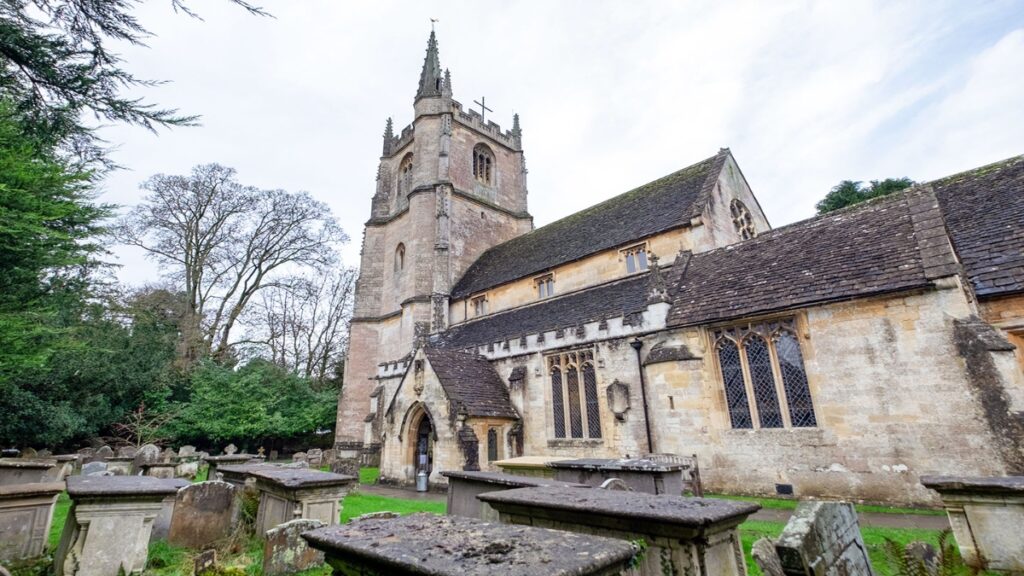
Timeless Village Photography Spots
Winding lanes reveal picture-perfect views that have inspired artists and filmmakers for generations. Though particularly famous for its bridge and church views, hidden corners offer countless photographic opportunities. Such as the ancient drinking well, still standing beside centuries-old cottages.
Top tip: Visit early morning to capture the village without modern vehicles in view.
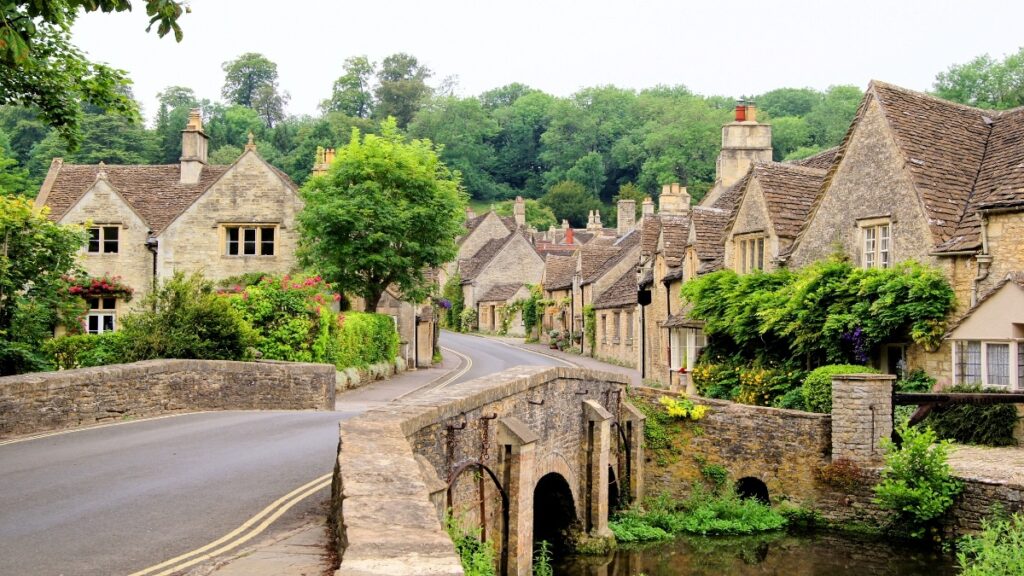
Centuries of history echo through narrow streets where time appears to stand still. While exploring these ancient thoroughfares, visitors discover why film crews frequently choose this location. As a result of careful preservation, Castle Combe maintains its reputation as the prettiest village in England.
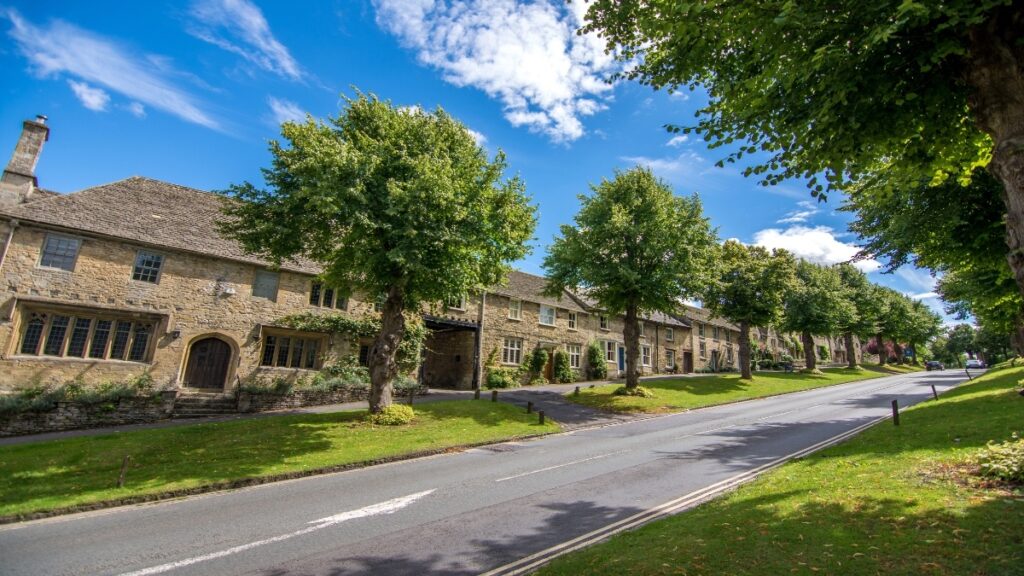
Essential Guide to Visiting the Nicest Cotswolds Villages
Planning your journey through the Cotswolds requires thoughtful consideration of seasonal variations and transport options. While exploring the nicest villages in Cotswolds, visitors discover each season offers unique experiences. Though especially beautiful during spring and summer, autumn and winter reveal different charms.
Seasonal Village Exploration Guide
Different seasons transform these historic villages, each offering distinct atmospheres and experiences. At first glance, summer presents perfect weather for outdoor exploration and photography. Even so, winter months provide opportunities to experience authentic village life without tourist crowds.
Top tip: Visit during shoulder season (March-May or September-October) for ideal photography conditions.
Traditional festivities and events throughout the year showcase local culture and community spirit. In fact, many of the nicest villages in Cotswolds host seasonal markets and cultural celebrations. Due to varying weather conditions, visitors should pack appropriate clothing for changeable British weather.
Transport and Accommodation Planning
Choosing suitable accommodation locations helps maximise exploration time in these historic settlements. Though particularly charming, some villages offer limited parking and accommodation options. Such as Castle Combe, where early arrival ensures better parking availability.
Local attraction: The Cotswolds Discovery Centre provides valuable information for planning village tours.
Thoughtful planning ensures visitors experience the full charm of these historic locations without common pitfalls. While public transport connects major towns, reaching smaller villages often requires careful scheduling. As a result of careful preparation, visitors create memorable journeys through these timeless communities.
Cotswolds Tours From London We Think You May Enjoy.


